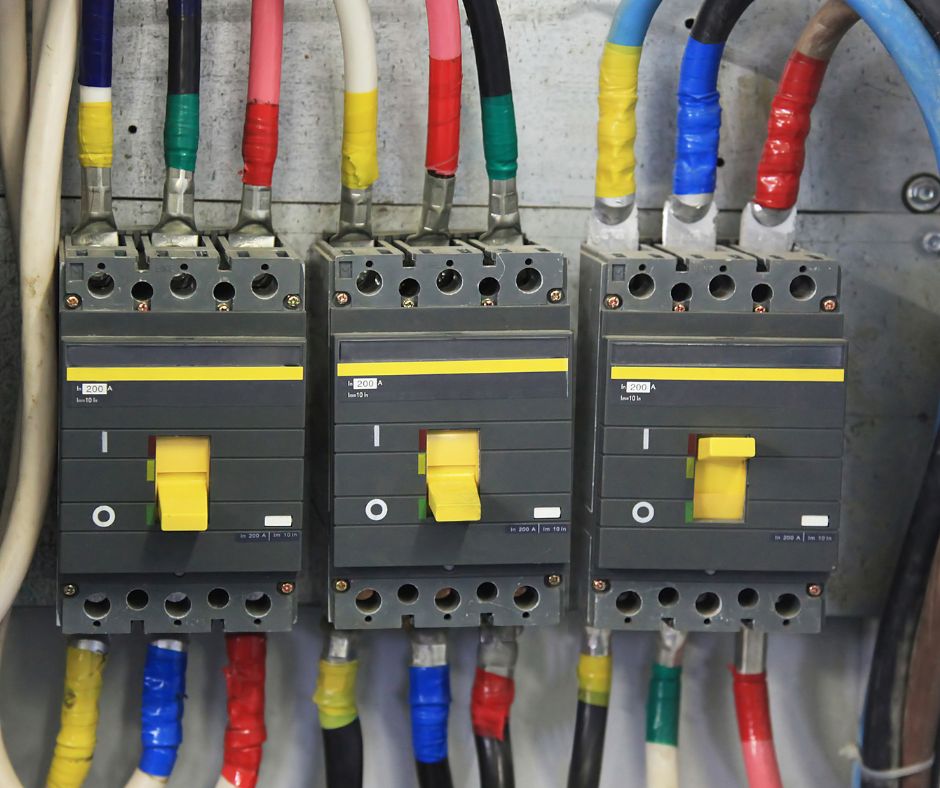Understanding the Crucial Importance of Electrical Insulation Tape for Electrical Safety
Electrical insulation tape serves a fundamental purpose in safeguarding and insulating a variety of electrical wires and cables. Commonly referred to as insulating tape, this vital tool is indispensable for ensuring safety in both industrial and residential settings. It effectively prevents electrical shorts and provides protection against moisture, dust, and abrasion, which can severely compromise the functionality of electrical systems. By understanding the importance of this tape, you can take proactive measures to avoid potential hazards and maintain a well-organized workspace, thereby significantly enhancing safety standards.
Electrical insulation tape comes in a wide array of sizes, lengths, and colors, each tailored for specific applications. These diverse options not only enhance insulation effectiveness but also facilitate the identification and organization of cables through an intuitive color-coding system. Utilizing various colors allows for streamlined electrical tasks, enabling quick identification of specific wires and greatly improving productivity and organization during electrical projects. This strategic approach not only saves time but also minimizes mistakes, ultimately leading to a more efficient workflow.

Recognizing the Critical Conditions Leading to the Melting of Electrical Tape
It is crucial to note that electrical tape can indeed melt under certain specific conditions that require careful monitoring. This article will thoroughly explore the temperature thresholds relevant to electrical tape, elaborate on the circumstances that may lead to melting, and highlight critical signs of overheating that necessitate vigilant observation. Gaining a comprehensive understanding of these factors is essential for ensuring the safe and effective use of electrical insulation tape across various applications.
Exploring the Temperature Limits of Electrical Tape for Safe Usage
Like many materials, electrical tape has defined temperature limits that are vital for safe usage. Most standard varieties of electrical tape can withstand temperatures of up to approximately 80°C, while some heavy-duty options are specifically designed to endure slightly higher temperatures. When exposed to conditions that exceed these critical thresholds, the integrity of the tape may begin to deteriorate, potentially leading to failures that compromise safety. Understanding these limitations is essential for anyone involved in electrical work, ensuring that safety and functionality are always prioritized.
As temperatures rise and approach their maximum threshold, the performance of electrical tape may start to decline significantly. This degradation can manifest in various forms, such as melting, a sticky or gooey texture, or, in severe cases, complete failure of the tape. Being aware of these temperature limits is crucial for maintaining safety and effectiveness in all electrical applications, ensuring that your projects proceed without unnecessary risks or complications. Regular monitoring of environmental conditions can help mitigate these risks effectively.
For environments subjected to extreme temperatures, it is advisable to opt for high-temperature variants of electrical tape. For example, heat-resistant tape, crafted from materials like fiberglass or silicone, can endure temperatures of up to 200°C or even higher, making it an excellent choice for applications exposed to significant heat. Choosing the right type of tape for your specific environment is a critical step in ensuring safety and performance.
Also Read: Keep Your Pets Safe Around Electricity
Request Your Quote Today!
Inquire About Our FREE Electrical Inspections

Identifying the Key Factors Contributing to the Melting of Electrical Tape
Electrical tape may melt due to several underlying factors, primarily arising from exposure to excessive heat. Understanding these causes is crucial for ensuring safe and efficient usage. Here are some of the most common reasons that lead to the melting of electrical tape:
Examining the Effects of Overexposure to Heat on Electrical Tape
The primary reason behind electrical tape melting is its proximity to high temperatures. If the tape is placed near hot surfaces, engines, or any components that generate heat, it may begin to soften, bubble, or potentially melt entirely. Additionally, electrical systems such as power circuits can generate heat levels that exceed the tape’s rated capacity, especially during operational malfunctions or overload scenarios. Therefore, it is essential to assess the working environment and ensure that electrical tape is used in appropriate locations to avoid potential failures.
When employing electrical tape in areas prone to high temperatures, it is prudent to verify the temperature ratings of the tape to prevent potential failures and maintain safety throughout the application process. Adhering to these guidelines can significantly reduce the risk of accidents and ensure a safer working environment.
Investigating How Environmental Degradation Impacts Electrical Tape Performance
Electrical tape is not designed for eternal durability. Over time, both the adhesive and the tape material can degrade, particularly when exposed to ultraviolet (UV) light, moisture, or other harsh environmental conditions. Such degradation can considerably diminish the insulating capabilities of the tape. As the tape ages, it may become less effective, exhibiting increased susceptibility to melting even at temperatures that would normally be manageable. Regular inspections are essential to ensure the continued effectiveness of the tape.
Routine wear and tear are expected aspects of the lifecycle of electrical tape. Therefore, it is vital to conduct periodic checks for any signs of aging or damage to ensure ongoing safety and effective performance in your electrical applications. Taking these proactive measures can help avert potential hazards and enhance overall safety.
Understanding the Risks of Incorrect Application of Electrical Tape
Improper application of electrical tape can lead to its early failure. For example, if the tape is wrapped too tightly, exposed to friction or elevated temperatures, or overstretched during application, its overall performance may be compromised. Moreover, wrapping the tape around sharp edges or applying it to components prone to overheating, such as light bulbs or electrical outlets, can create issues unless the tape is explicitly rated for those specific applications.
Also Read: 10 Ways to Save On Power And Energy Costs
Recognizing the Key Indicators of Overheating Electrical Tape
If you suspect that your electrical tape is overheating, there are several key indicators you should monitor closely. Here are the most common signs that may suggest your tape is melting or experiencing excessive heat:
Identifying a Sticky or Tacky Texture in Overheated Electrical Tape
A noticeable change in texture, particularly a sticky or tacky feel, is often one of the first signs of melting electrical tape. This alteration serves as an early warning sign of further degradation, indicating that the tape may no longer provide adequate insulation. Swift action is necessary upon observing this change to prevent further issues and ensure safety.
Detecting Discoloration as a Critical Sign of Heat Damage
Overheated electrical tape may exhibit significant discoloration. You might observe a shift from its standard black or colored appearance to shades of brown, dark gray, or even black. This change occurs as heat causes the tape’s PVC or other materials to break down. Early detection of this issue is crucial to prevent further damage to your wires. If left unaddressed, it may lead to melting or create severe fire hazards, emphasizing the importance of prompt action.
Observing Bubbling or Distortion as Indicators of Excessive Heat
If electrical tape begins to bubble, distort, or warp, it indicates that heat is adversely affecting its structure. This typically occurs when heat causes the adhesive or plastic layers to separate or degrade. The surface may appear wavy or uneven, signaling that temperatures are exceeding safe levels. Upon noticing these bubbles, it is advisable to consult your electrician for a thorough evaluation of the situation to prevent potential hazards.
Identifying a Burning Smell as a Serious Warning Sign
A burning smell near electrical tape is a serious warning sign that should never be ignored. This odor may resemble melting plastic or burning rubber. When excessive heat causes the adhesive to break down, the resulting fumes can be alarming. Do not overlook this warning. If you detect a burning smell, it may indicate that the tape is on the verge of melting or potentially igniting, necessitating immediate action.
Visible Smoke as a Major Indicator of Danger
If you see smoke coming from the electrical tape, it is a clear indication that the heat levels have significantly exceeded the tape’s capacity. Smoke is a strong signal that the tape has likely begun to melt or may even be igniting. At this critical juncture, it is imperative to turn off the power source immediately and seek assistance from your electrician to prevent any catastrophic incidents.
Remember: Never use water to extinguish an electrical fire. Instead, utilize a CO2 fire extinguisher for safety.
Essential Safety Protocols to Follow if Electrical Tape Melts
If your electrical tape melts, the first step is to disconnect any power sources or switch off any equipment to ensure safety.
Prioritizing safety is paramount, as electrical hazards can pose significant risks to both life and property. Always be aware of your surroundings and take necessary precautions to mitigate risks.
Once you have ensured that the area is safe, it is crucial to consult your electrician for professional guidance. If a professional installed the tape, they may need to inspect the area for any underlying electrical issues that could have contributed to the problem. This comprehensive assessment is vital to ensuring ongoing safety and functionality within your electrical systems.
Exploring Effective Alternatives to Electrical Tape for High-Temperature Environments
If you frequently work in conditions where temperatures exceed the limits of standard electrical tape, it is wise to consult your electrician about suitable alternatives. Here are several options that are worth considering:
- Heat-resistant silicone tape: This specialized tape is designed to withstand elevated temperatures and is ideal for applications where heat presents a significant concern.
- Fiberglass tape: A robust option that can handle extreme temperatures without compromising performance or safety, making it a reliable choice for demanding applications.
- Mica or ceramic insulation: For the highest level of heat protection, specialized insulations such as mica or ceramic serve as excellent choices, ensuring maximum safety in high-temperature environments.
Critical Insights into the Dangers Associated with Melting Electrical Tape
In summary, electrical tape can indeed melt, primarily due to exposure to excessive heat. Understanding the temperature limits of your tape and ensuring you select the appropriate type for your specific application are crucial steps in preventing potential issues. By remaining alert to signs such as discoloration, stickiness, or unusual smells, you can take swift action to mitigate risks. Always prioritize safety and do not hesitate to reach out to your local electrician for expert advice when needed. Ensuring the longevity and effectiveness of your electrical tape is vital for maintaining a safe environment.
Request Your Quote Today!
Inquire About Our FREE Electrical Inspections

The Article: Does Electrical Tape Melt? Here’s What You Need to Know first appeared on https://writebuff.com
The Article Electrical Tape Melting: Essential Facts You Should Know Was Found On https://limitsofstrategy.com
The Article Electrical Tape Melting: Key Facts You Need to Know First Appeared ON
: https://ad4sc.com


Your exploration of electrical insulation tape highlights its often-overlooked significance in both safety and organization. From a personal perspective, I’ve found that using color-coded tape not only aids in identifying wires but also enhances the efficiency of troubleshooting electrical issues. For instance, during a recent home renovation, I employed different colors to indicate power, ground, and neutral wires, which proved invaluable in maintaining clarity amid the chaos of cables.